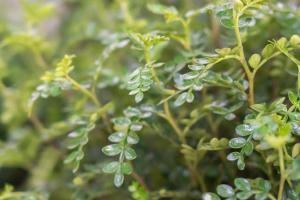Introduction
Dolomite lime is a type of limestone that is commonly used as a soil amendment in potted plants. It is named after the French mineralogist Déodat de Dolomieu, who first identified it in 1791. Dolomite lime provides important benefits to potted plants, such as improving soil structure, increasing nutrient availability, and balancing pH levels. In this article, you will learn how to use dolomite lime in potted plants to help your plants thrive.
What is Dolomite Lime?
Dolomite lime is a type of limestone that possesses high levels of magnesium and calcium. It is crushed and pulverized to create a fine powder that is then used as a soil amendment in potted plants. Dolomite lime works by releasing these important minerals into the soil to improve soil structure, increase nutrient availability, and balance pH levels.
Why Use Dolomite Lime in Potted Plants?
Dolomite lime has many benefits for potted plants, including:
Improving soil structure: Dolomite lime can help to break up heavy, clay soils, making it easier for roots to grow and nutrients to penetrate.
Increasing nutrient availability: The high levels of magnesium and calcium in dolomite lime can help to improve plant growth and increase nutrient uptake.
Boosting pH levels: Dolomite lime can help to balance soil pH levels, making it easier for plants to absorb nutrients and preventing the buildup of toxic substances in the soil.
How to Use Dolomite Lime in Potted Plants
To use dolomite lime in potted plants, follow these steps:
Choose the right dolomite lime: Dolomite lime comes in different grades, so it's important to choose the right one for your plants. Look for a product that is labeled specifically for use in potted plants, and make sure it contains both magnesium and calcium.
Measure the amount of dolomite lime to add: The amount of dolomite lime you need to add will depend on the size of your pot and the type of plant you are growing. As a general rule, use 1-2 tablespoons of dolomite lime per gallon of potting soil.
Mix dolomite lime into potting soil: After measuring the right amount of dolomite lime, mix it thoroughly into your potting soil before adding it to your pot. This will ensure that the lime is evenly distributed and will benefit all parts of the plant.
Water your plants: After adding dolomite lime to your potting soil, water your plants thoroughly to ensure that the lime is evenly distributed throughout the soil. This will help to activate the lime and provide important nutrients and minerals to your plants.
Conclusion
Dolomite lime is an effective and natural way to improve soil structure, increase nutrient availability, and balance pH levels in potted plants. By following these simple steps, you can easily add dolomite lime to your potting soil and help your plants thrive. So why not give it a try today and see the difference it can make in your potted plants!

 how many times do yo...
how many times do yo... how many planted tre...
how many planted tre... how many pine trees ...
how many pine trees ... how many pecan trees...
how many pecan trees... how many plants comp...
how many plants comp... how many plants can ...
how many plants can ... how many plants and ...
how many plants and ... how many pepper plan...
how many pepper plan...
































